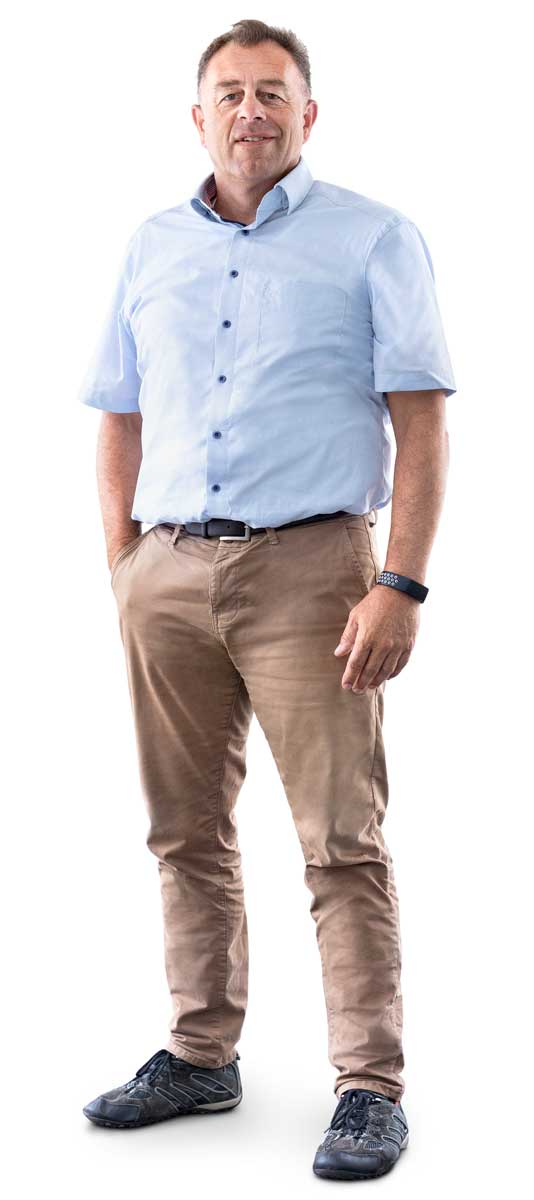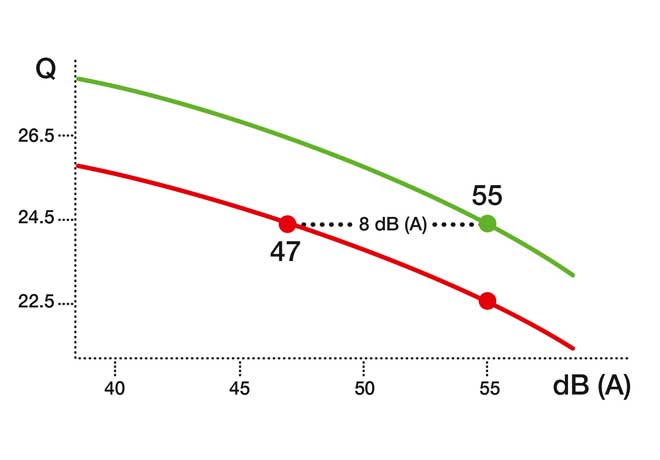
Directives, such as “Technical Instructions for Protection against Noise 6.1” in Germany, regulate how loud a heat pump is allowed to be. In a residential area, for example, it can operate at 40 dB (A) at night. These are strict limits and the following applies as a basic principle: the fewer decibels, the less trouble is caused with the neighbors. But there are other factors that make all the difference in the end. In standardized experiments, psychoacoustics investigates how pleasant different people find a noise and translates this into objectively measurable values. The final value we are talking about here is the psychoacoustic overall quality of a sound, QOA. The higher the QOA, the more pleasant the noise is to human ears. ebm-papst maintains its own psychoacoustics laboratory and has tested various compositions of heat pump noises on over 100 subjects.
Four parameters are relevant for the QOA in this context: N is the loudness, measured in the unit sone. It indicates how loud a noise is for human hearing. S is the sharpness, measured in the unit acum. It indicates how many high frequencies a noise contains. T is the tonality, measured in the unit tuHMS. It indicates how disruptive individual tones in a noise are perceived as being. H is the Shannon entropy, measured in bits. It indicates how much a noise changes over time and how randomly this happens, e.g. swelling and subsiding.
Happy neighbors thanks to quiet heat pump
From the hearing tests, it is then possible to determine the preferences and inclinations of the subjects and to weight them statistically. The statistical calculations give a value to the preliminary factors k1, k2, k3 and k4. k0 is merely a quality constant, which defines the QOA so that a value of QOA = 0 corresponds to a volume hazardous to health.
The values obtained experimentally and statistically for the preliminary factors can be referred to physical, i.e. objectively measurable, parameters – and so finally to the design of a heat pump and the fans installed in it. The usual starting points for noise reduction include air duct design, turbulence or inflows at the fan. The tests show that, if we improve the QOA of a specific heat pump noise by the value 2 at a constant noise level, it is perceived as being as pleasant as having made it quieter by a total of 8 db (A)!
That is why a high QOA means a nicer time spent in your own garden, and a better relationship with the neighbors.
Read more about heat pumps:
Sustainable energy supply with heat pumps
ebm-papst offers efficient and quiet products suitable for indoor, outdoor or hybrid heat pump applications.


Leave a comment